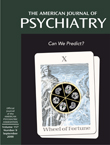Karen Horney is not one of the mainstream psychoanalysts whose writings are taught and read in most American psychoanalytic institutes. Her theory of personality styles and neurotic trends is taught almost exclusively at the American Institute for Psychoanalysis, of which she was one of the founders and which is known familiarly as the “Horney Institute.” Nevertheless, Bernard Paris, a professor of English at the University of Florida, seems determined not to allow her work to be totally forgotten. He has published a biography of Horney
(1), and in one book
(2) has applied her theories to literary criticism, exploring the “personality” of fictional characters. He has also founded the International Karen Horney Society, which he directs.
Horney was involved in the development of psychoanalysis from the early days and was generally outspoken when she disagreed with the mainstream. Her early papers on feminine development critiqued Freud’s phallic-centered notions of how women (and men) come to know and value their own gender. Her 1936 paper on the negative therapeutic reaction is still one of the best explorations of that puzzling phenomenon in psychotherapy. When some of her writing seemed almost too “popular” both in tone and appeal, and her deviance from the rather rigid orthodoxy of psychoanalysis in the United States forced a showdown, she left the New York Psychoanalytic Society and continued to develop her own ways of thinking, eventually summarizing her ideas on the development of “neurotic trends” in her final book,
Neurosis and Human Growth (3). However, she died rather young, and many feel that much of her thinking, particularly in the area of psychoanalytic technique, was unfinished. A small volume, based on her last lectures to candidates at the American Institute for Psychoanalysis
(4), was originally published in 1987.
Paris has attempted in this book to bring all that is available about Horney’s thinking on analytic technique together, and it is unfortunate that the result is rather like viewing the ruins of a Greek temple: a pillar here, a wall there, a carving over there; the elements of a beautiful building are there, but one would like to have been able to see the whole thing all together. Paris has collected published and unpublished papers (including the negative therapeutic reaction paper). In addition, he has mined the back issues of the American Journal of Psychoanalysis (published by the “Horney Institute”) for reconstructions of some of her last lectures by her students, including Ralph Slater, Morton B. Cantor, Louis A. Azorin, Emy A. Metzger, Joseph Zimmerman, Wanda Willig, and Sara Sheiner. The outline of a possible book on technique is thus sketched, but really only sketched. Horney’s writing in English was clear and down-to-earth, easily readable and devoid of psychoanalytic jargon. She made her ideas accessible, and if she had lived to pull together her thinking about how to do psychoanalytic therapy, one can imagine that the result would have been a clear and readable account.
What is apparent is that Horney saw the relationship between analyst and analysand, therapist and patient, as central to any theory of technique and that her thinking foreshadowed what is now being taught as “intersubjective” theory. As Paris points out,
Horney’s model of the therapist-patient relationship [was] mutual, cooperative, and democratic. Ideally, it is not only the patient who is associating, being analyzed, and growing but the therapist as well. “How much can have happened with the patient in analysis,” Horney asked, “if nothing happened to the analyst while working with him? In a successful analysis, something happens to both people.…” Horney’s model is not one in which therapists and patients analyze each other but rather one in which therapists continually analyze themselves while helping their patients toward self-understanding and growth. (p. 170)
Horney devoted considerable time in her lectures, apparently, to the quality of the analyst’s attention, emphasizing not a bare “evenly hovering attention” but virtues such as “wholeheartedness,” “comprehensiveness,” and “productiveness.” In one of the reconstructed lectures (“The Analyst’s Personal Equation”), she describes both the assets and the liabilities inherent in any analyst’s neurotic trends. The “narcissistic analyst,” for instance, may initially make his or her patients feel accepted by being warm, charming, and vivacious, but “because of his need for quick understanding, he tends to generalize too much and to categorize his patients rather than seeing them as unique and complicated human beings” (p. 194). This attitude toward countertransference—as inherent to the human relationship of analyst and analysand and as including both constructive and destructive aspects—is generally accepted by today’s psychoanalysts but would have been controversial in the 1950s.
This book is a work of scholarship and should be read by anyone who wants to be a good psychotherapist. Horney’s clear style of writing makes her ideas accessible; her insistence on self-understanding and emotional honesty is challenging. Her ideas deserve a chance to rejoin and enrich the mainstream of psychodynamic therapy and psychiatry, and perhaps Paris’ delving into archives will give some impetus to a revival of interest in her work.

